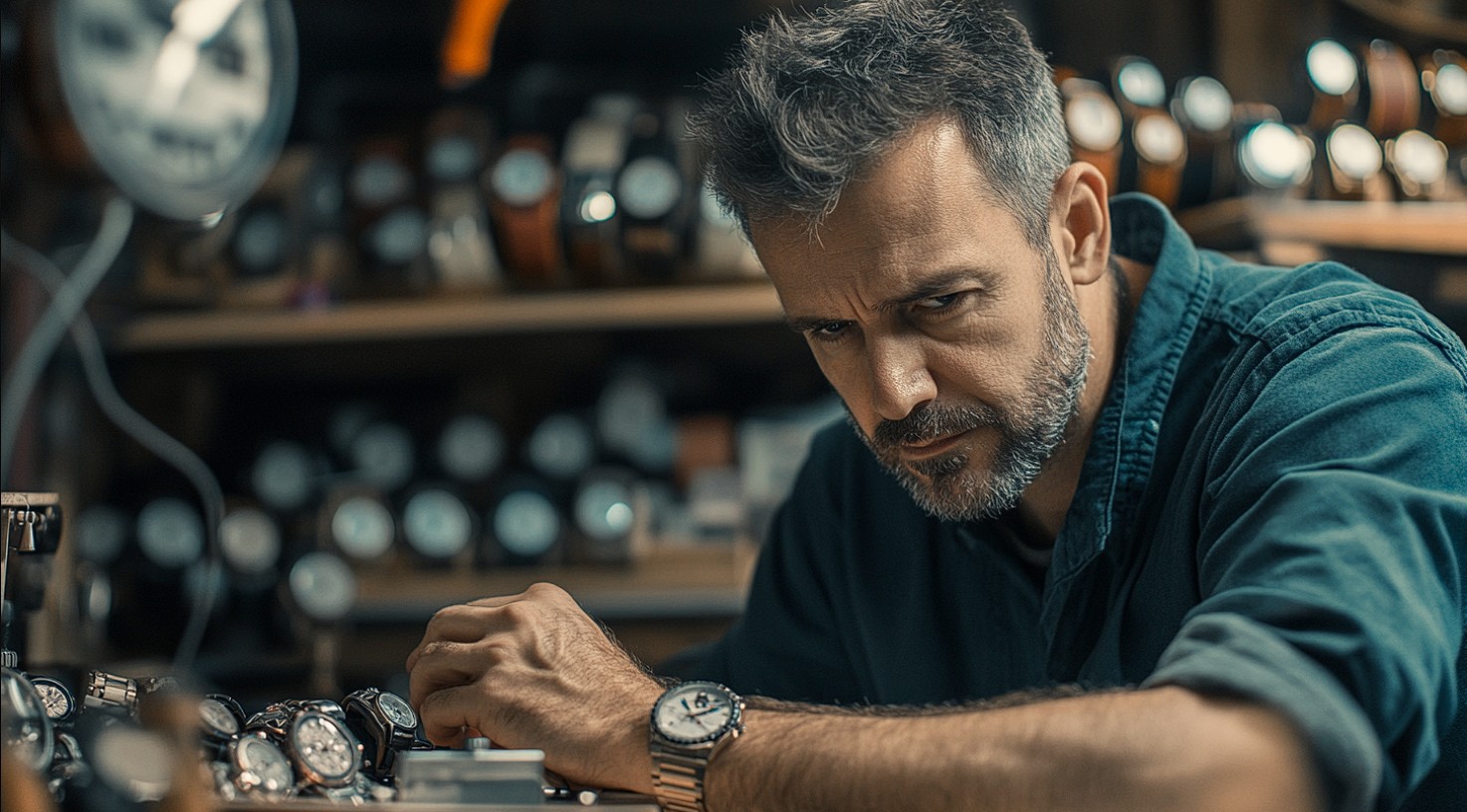Watchmaking is a true art form. Despite the passage of centuries, the combination of skill and precision engineering continues to embody creativity and meticulous craftsmanship. Whether it’s the intricate mechanical gears found in traditional watches or the sleek efficiency of quartz timepieces, watchmaking is a fascinating domain that showcases human ingenuity. For those who see a well-crafted watch as a piece of art, there exists a captivating world of both watch repair and creation. Below, we explore the history and techniques of watchmaking, along with the knowledge required to become a proficient watchmaker, as shared by Kirill Yurovskiy, author of *Timeless Craft*.
A Brief History of Watchmaking
Watchmaking emerged in the 16th century with the advent of the first portable timepieces in Europe, evolving from large and clumsy designs to increasingly smaller and more refined instruments thanks to technological and design advancements. The invention of the mainspring in the 15th century was pivotal, allowing for the creation of compact, portable watches for the first time.
Significant progress was made in the 18th and 19th centuries with the development of the lever escapement through mass production techniques. Notably, Swiss watchmakers gained a reputation for their precision, solidifying Switzerland’s status as a hub for this industry. Today, watchmaking marries tradition with cutting-edge technology, transforming ordinary timekeeping devices into exquisite pieces of art. For more information, visit https://watch-kirill-yurovskiy.co.uk/.
The Anatomy of a Watch: Understanding Its Parts
To truly appreciate the art of watchmaking, one must first familiarize themselves with the components of a watch. A typical mechanical watch consists of hundreds of tiny parts that work together to create a functioning mechanism. Key components include:
- Movement: The core mechanism that measures time, available in two main types: quartz and mechanical, which can be wound manually or automatically.
- Dial: The face of the watch that displays the time through markers and hands.
- Case: The exterior shell that protects the movement and dial.
- Crown: A small knob used for setting the time or winding the watch.
- Escapement: A mechanism that regulates energy release, ensuring accurate timekeeping.
- Balance Wheel: This component oscillates at a consistent rate, controlling the speed of the movement.
Understanding these components is the first step toward mastering watchmaking and repair.
Common Watch Problems and Solutions
As mechanical devices, watches are prone to wear and tear. Common issues include:
- Battery Replacement: Quartz watches require battery changes, which are usually straightforward and can be performed with basic tools.
- Crystal Damage: Scratched or cracked crystals can be replaced to rejuvenate the watch.
- Strap or Bracelet Repair: Straps may wear out or break, but these repairs typically involve simple replacements.
- Mechanical Problems: Mechanical watches may stop functioning correctly due to dust accumulation, dried lubrication, or general wear. These issues often can be resolved through cleaning and servicing the movement.
While some repairs can be done independently, many problems are best handled by a professional watchmaker.
Essential Tools for Every Watchmaker
The field of horology requires a specific set of tools to manage the intricate and precise nature of watchmaking. Some key tools include:
- Screwdrivers: Precision screwdrivers for adjusting tiny screws within the movement.
- Tweezers: Anti-magnetic tweezers for picking up small components.
- Loupe: A magnifying glass worn on the eye for inspecting small parts.
- Case Opener: Tools for opening watch cases without causing damage.
- Movement Holder: A device that secures the movement during repairs.
- Oilers: Tools for applying lubrication to the movement.
Investing in high-quality tools is crucial for achieving professional results.
Quartz vs. Mechanical Watches: A Comparative Evolution
The watch industry is broadly categorized into ‘quartz’ and mechanical watches. Quartz watches, powered by batteries and regulated by electronic oscillators, are known for their accuracy and affordability. They gained popularity during the ‘Quartz Crisis’ of the 1970s, leading to a decline in mechanical watch sales.
In contrast, mechanical watches, driven by a mainspring and regulated by a balance wheel, represent a commitment to craftsmanship, complexity, and tradition. Despite the dominance of quartz watches, mechanical timepieces maintain a strong appeal among collectors and enthusiasts.
Maintaining and Extending Your Watch’s Life
Proper maintenance is vital for prolonging the life of a timepiece. Here are some tips:
- Regular Servicing: Mechanical watches should be serviced every 3-5 years for cleaning and lubrication of the movement.
- Avoid Water Exposure: Determine the water resistance of your watch and avoid exposing it to water if it isn’t rated for it.
- Proper Storage: Keep your watch in a cool, dry place, ideally in a watch box or pouch.
- Periodic Winding: Occasionally wind mechanical watches to keep the movement running smoothly.
Taking care of your watch will help maintain its functionality and longevity.
The Increasing Demand for Luxury Watch Repairs
The demand for luxury watches has surged, driving growth in this specialized market. Consequently, there is a greater need for skilled watchmakers to repair and maintain these intricate timepieces. Professionals in this niche are increasingly valued for their expertise and the sophisticated tools required for luxury watch service and repair.
Training to Become a Professional Watchmaker
In addition to practical experience, aspiring watchmakers need formal training to become licensed. Many attend esteemed schools such as the Swiss Watchmaking School or the British School of Watchmaking, where they learn the fundamentals of the craft.
Apprenticeships and internships under experienced watchmakers also provide invaluable hands-on experience. Certification from recognized organizations further enhances job prospects in this field.
The Future of Watchmaking
The fusion of tradition and innovation will continue to shape the future of watchmaking. Despite evolving trends, there remains a strong demand for skilled professionals. As long as there are individuals who appreciate the artistry and sophistication of finely crafted timepieces, the art of watchmaking will thrive. For enthusiasts of this timeless craft, the future is bright with infinite possibilities for creation, repair, and preservation of these remarkable engineering marvels.


Leave a Reply